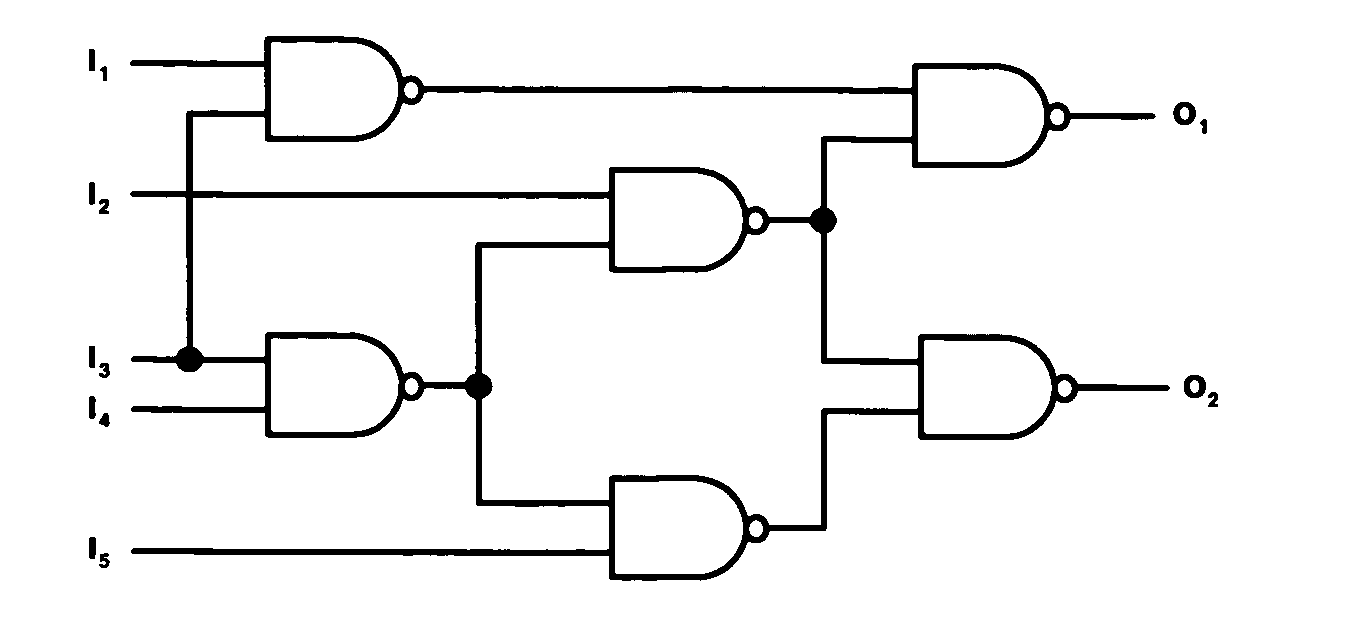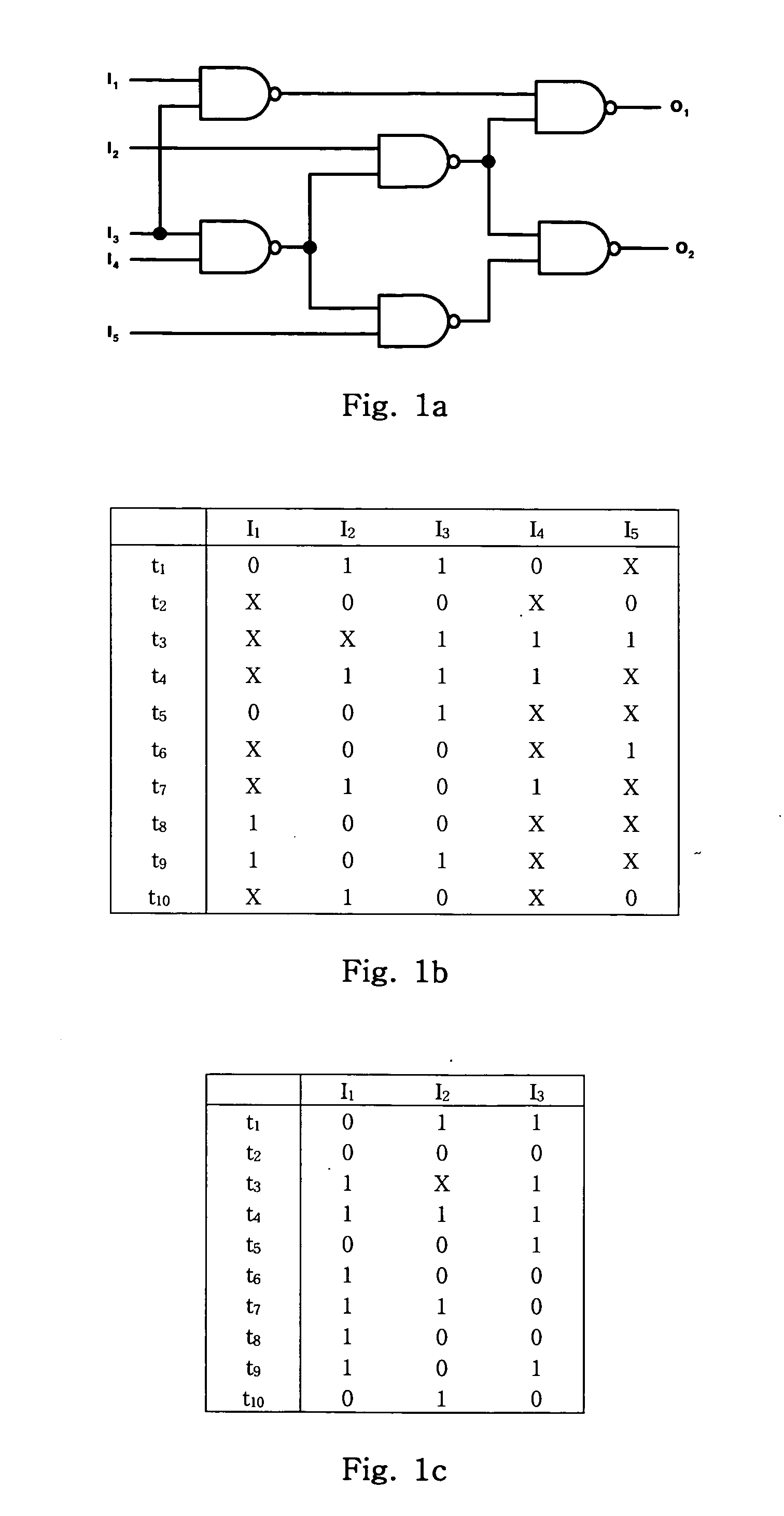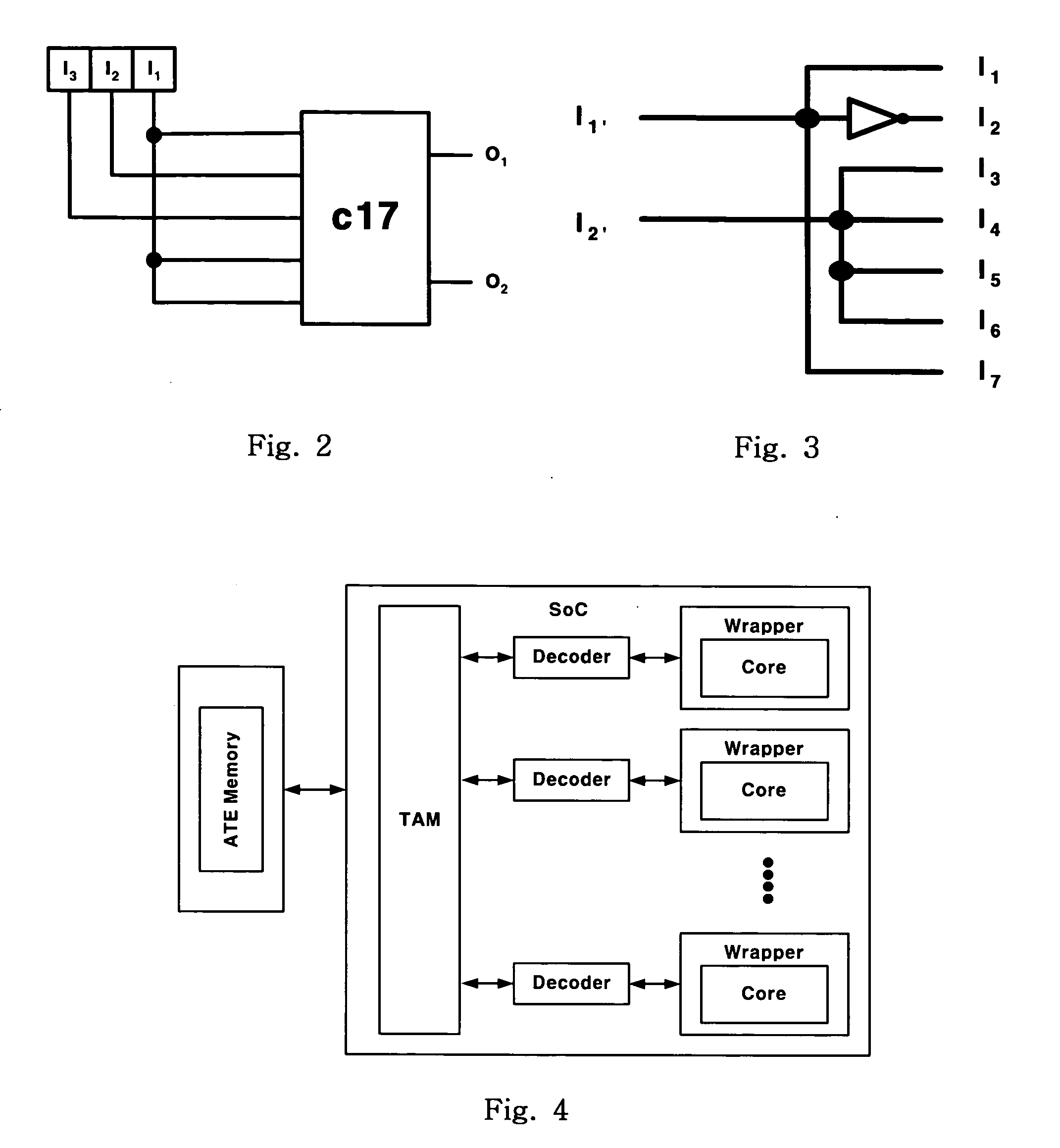Method of efficiently compressing and decompressing test data using input reduction
a compression method and input reduction technology, applied in the field of new test data compression method, can solve the problems of inadequacies of the method of using bist, the inability to accurately solve the problem of reconstructed ate or expensive ate, and the difficulty of re-creation of existing a
- Summary
- Abstract
- Description
- Claims
- Application Information
AI Technical Summary
Benefits of technology
Problems solved by technology
Method used
Image
Examples
Embodiment Construction
[0039] A detailed description of the preferred embodiment of the present invention will now be given with reference to the attached drawings.
1. Modification of the IR Scheme
[0040] The present invention modifies the conventional IR scheme and proposes a new IR scheme for improving compression ratio. The new IR scheme finds inputs that can use identical test inputs without diminishing the failure detection ratio of a conventional test pattern. Distinguished from the conventional IR scheme proposed by C. A. Chen and S. K. Gupta [“Efficient BIST TPG Design and Test Set Compaction via Input Reduction,” IEEE Transactions on Computer Aided Design of Integrated Circuit and Systems, Vol. 17, pp., 1998], the IR scheme of the present invention requires finding compatible inputs and inversely compatible inputs using given test data TD because the IR scheme of the invention has no regard for ATPG for BIST. Thus, the IR scheme of the present invention needs a new IR algorithm.
PUM
 Login to View More
Login to View More Abstract
Description
Claims
Application Information
 Login to View More
Login to View More - R&D
- Intellectual Property
- Life Sciences
- Materials
- Tech Scout
- Unparalleled Data Quality
- Higher Quality Content
- 60% Fewer Hallucinations
Browse by: Latest US Patents, China's latest patents, Technical Efficacy Thesaurus, Application Domain, Technology Topic, Popular Technical Reports.
© 2025 PatSnap. All rights reserved.Legal|Privacy policy|Modern Slavery Act Transparency Statement|Sitemap|About US| Contact US: help@patsnap.com



